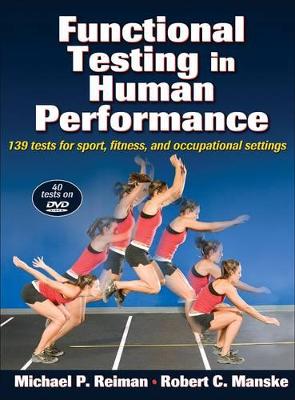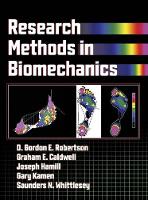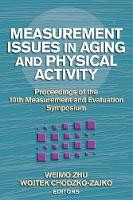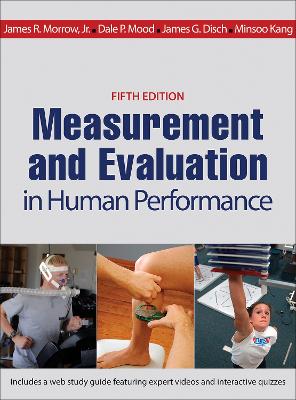Research Methods in Physical Activity
Research Methods in Physical Activity
; ;
Human Kinetics Publishers
07/2015
496
Dura
Inglês
9781450470445
1474
Descrição não disponível.
Part I: Overview of the Research Process Chapter 1. Introduction to Research in Physical Activity The Nature of Research Unscientific Versus Scientific Methods of Problem Solving Alternative Models of Research Types of Research Overview of the Research Process Parts of a Thesis: A Reflection on the Steps in the Research Process Summary Chapter 2. Developing the Problem and Using the Literature Identifying the Research Problem Purpose of the Literature Review Basic Literature Search Strategies Steps in the Literature Search Summary Chapter 3. Presenting the Problem Choosing the Title Writing the Introduction Stating the Research Problem Presenting the Research Hypothesis Operationally Defining Terms Basic Assumptions, Delimitations, and Limitations Justifying the Significance of the Study Differences Between the Thesis and the Research Article Summary Chapter 4. Formulating the Method How to Present Methodological Details Why Planning the Method Is Important Two Principles for Planning Experiments Describing Participants Describing Instruments Describing Procedures Describing Design and Analysis Establishing Cause and Effect Interaction of Participants, Measurements, and Treatments Summary Chapter 5. Ethical Issues in Research and Scholarship Seven Areas of Scientific Dishonesty Ethical Issues Regarding Copyright Model for Considering Scientific Misconduct Working With Faculty Protecting Human Participants Protecting Animal Subjects Summary Part II: Statistical and Measurement Concepts in Research Chapter 6. Becoming Acquainted With Statistical Concepts Why We Need Statistics Use of Computers in Statistical Analysis Description and Inference Are Not Statistical Techniques Ways to Select a Sample Justifying Post Hoc Explanations Difficulty of Random Sampling and Assignment: How Good Does It Have to Be? Unit of Analysis Measures of Central Tendency and Variability Basic Concepts of Statistical Techniques Data for Use in the Remaining Statistical Chapters Summary Chapter 7. Statistical Issues in Research Planning and Evaluation Probability Meaningfulness (Effect Size) Power Using Information in the Context of the Study Summary Chapter 8. Relationships Among Variables What Correlational Research Investigates Understanding the Nature of Correlation What the Coefficient of Correlation Means Using Correlation for Prediction Partial Correlation Uses of Semipartial Correlation Procedures for Multiple Regression Logistic Regression Discriminant Function AnalysisMultivariate Forms of Correlation Summary Chapter 9. Differences Among Groups How Statistics Test Differences Types of t Tests Interpreting t Relationship of t and r Analysis of Variance Analysis of Covariance Experimentwise Error Rate Understanding Multivariate Techniques Summary Chapter 10. Nonparametric Techniques Chi Square: Testing the Observed Versus the Expected Procedures for Rank-Order Data Correlation Differences Among Groups Summary Chapter 11. Measuring Research Variables Validity Reliability Methods of Establishing Reliability Intertester Reliability (Objectivity) Standard Error of Measurement Using Standard Scores to Compare Performance Measuring Movement Measuring Written Responses Measuring Affective Behavior Scales for Measuring Affective Behavior Measuring Knowledge Item Response Theory Summary Part III: Types of Research Chapter 12. Sociohistorical Process in Sport Studies David K. Wiggins and Daniel S. Mason Development of the Discipline Theory and Sport History Relationship Between Theory and Method Research Goals and Questions Research Topics Research Design Data Analysis and Interpretation Research Findings Exemplary Studies in Sport History Summary Chapter 13. Philosophical Research in Physical Activity R. Scott Kretchmar and Tim Elcombe Identifying the Purposes of Philosophical Research Identifying the Range of Philosophical Research Locating a Research Problem Analyzing a Research Problem Summary Chapter 14. Research Synthesis (Meta-Analysis) Using Meta-Analysis to Synthesize Research Presenting Effect Size Data Summary Chapter 15. Surveys Questionnaires Electronic Surveys Delphi Method Personal Interviews Normative Surveys Summary Chapter 16. Other Descriptive Research Methods Developmental Research Case Studies Job Analysis Observational Research Unobtrusive Research Techniques Correlational Research Summary Chapter 17. Physical Activity Epidemiology Research Barbara E. Ainsworth and Charles E. Matthews Observational Versus Experimental Research What Is Epidemiology? Physical Activity Measurement Definitions Assessment of Physical Activity Epidemiological Study Designs Reading and Interpreting a Physical Activity Epidemiological Study Summary Chapter 18. Experimental and Quasi-Experimental Research Sources of Invalidity Threats to Internal Validity Threats to External Validity Controlling Threats to Internal Validity Controlling Threats to External Validity Types of Designs Summary Chapter 19. Qualitative Research Procedures in Qualitative Research Analysis of the Data Concluding Remarks Summary Chapter 20. Mixed-Methods Research Combining Quantitative and Qualitative Methods Designing Mixed-Methods Research Issues in Mixed-Methods Research Examples of Mixed-Methods Research Summary Part IV: Writing the Research Report Chapter 21. Completing the Research Process Research Proposal Thesis and Dissertation Proposal Advisor and Dissertation Committee The Good Scholar Must Research and Write Scientific Writing First Things Are Sometimes Best Done Last Developing a Good Introduction Describing the Method The Proposal Process Preparing and Presenting Qualitative Research Proposals Writing Proposals for Granting Agencies Submitting Internal Proposals Completing Your Thesis or Dissertation Results and Discussion Handling Multiple Experiments in a Single Report Using Tables and Figures Summary Chapter 22. Ways of Reporting Research Basic Writing Guidelines A Brief Word About Acknowledgments Thesis and Dissertation Format: Traditional Versus Journal Helpful Hints for Successful Journal Writing Revising Research Papers Writing Abstracts Making Oral and Poster Presentations Summary
Este título pertence ao(s) assunto(s) indicados(s). Para ver outros títulos clique no assunto desejado.
Part I: Overview of the Research Process Chapter 1. Introduction to Research in Physical Activity The Nature of Research Unscientific Versus Scientific Methods of Problem Solving Alternative Models of Research Types of Research Overview of the Research Process Parts of a Thesis: A Reflection on the Steps in the Research Process Summary Chapter 2. Developing the Problem and Using the Literature Identifying the Research Problem Purpose of the Literature Review Basic Literature Search Strategies Steps in the Literature Search Summary Chapter 3. Presenting the Problem Choosing the Title Writing the Introduction Stating the Research Problem Presenting the Research Hypothesis Operationally Defining Terms Basic Assumptions, Delimitations, and Limitations Justifying the Significance of the Study Differences Between the Thesis and the Research Article Summary Chapter 4. Formulating the Method How to Present Methodological Details Why Planning the Method Is Important Two Principles for Planning Experiments Describing Participants Describing Instruments Describing Procedures Describing Design and Analysis Establishing Cause and Effect Interaction of Participants, Measurements, and Treatments Summary Chapter 5. Ethical Issues in Research and Scholarship Seven Areas of Scientific Dishonesty Ethical Issues Regarding Copyright Model for Considering Scientific Misconduct Working With Faculty Protecting Human Participants Protecting Animal Subjects Summary Part II: Statistical and Measurement Concepts in Research Chapter 6. Becoming Acquainted With Statistical Concepts Why We Need Statistics Use of Computers in Statistical Analysis Description and Inference Are Not Statistical Techniques Ways to Select a Sample Justifying Post Hoc Explanations Difficulty of Random Sampling and Assignment: How Good Does It Have to Be? Unit of Analysis Measures of Central Tendency and Variability Basic Concepts of Statistical Techniques Data for Use in the Remaining Statistical Chapters Summary Chapter 7. Statistical Issues in Research Planning and Evaluation Probability Meaningfulness (Effect Size) Power Using Information in the Context of the Study Summary Chapter 8. Relationships Among Variables What Correlational Research Investigates Understanding the Nature of Correlation What the Coefficient of Correlation Means Using Correlation for Prediction Partial Correlation Uses of Semipartial Correlation Procedures for Multiple Regression Logistic Regression Discriminant Function AnalysisMultivariate Forms of Correlation Summary Chapter 9. Differences Among Groups How Statistics Test Differences Types of t Tests Interpreting t Relationship of t and r Analysis of Variance Analysis of Covariance Experimentwise Error Rate Understanding Multivariate Techniques Summary Chapter 10. Nonparametric Techniques Chi Square: Testing the Observed Versus the Expected Procedures for Rank-Order Data Correlation Differences Among Groups Summary Chapter 11. Measuring Research Variables Validity Reliability Methods of Establishing Reliability Intertester Reliability (Objectivity) Standard Error of Measurement Using Standard Scores to Compare Performance Measuring Movement Measuring Written Responses Measuring Affective Behavior Scales for Measuring Affective Behavior Measuring Knowledge Item Response Theory Summary Part III: Types of Research Chapter 12. Sociohistorical Process in Sport Studies David K. Wiggins and Daniel S. Mason Development of the Discipline Theory and Sport History Relationship Between Theory and Method Research Goals and Questions Research Topics Research Design Data Analysis and Interpretation Research Findings Exemplary Studies in Sport History Summary Chapter 13. Philosophical Research in Physical Activity R. Scott Kretchmar and Tim Elcombe Identifying the Purposes of Philosophical Research Identifying the Range of Philosophical Research Locating a Research Problem Analyzing a Research Problem Summary Chapter 14. Research Synthesis (Meta-Analysis) Using Meta-Analysis to Synthesize Research Presenting Effect Size Data Summary Chapter 15. Surveys Questionnaires Electronic Surveys Delphi Method Personal Interviews Normative Surveys Summary Chapter 16. Other Descriptive Research Methods Developmental Research Case Studies Job Analysis Observational Research Unobtrusive Research Techniques Correlational Research Summary Chapter 17. Physical Activity Epidemiology Research Barbara E. Ainsworth and Charles E. Matthews Observational Versus Experimental Research What Is Epidemiology? Physical Activity Measurement Definitions Assessment of Physical Activity Epidemiological Study Designs Reading and Interpreting a Physical Activity Epidemiological Study Summary Chapter 18. Experimental and Quasi-Experimental Research Sources of Invalidity Threats to Internal Validity Threats to External Validity Controlling Threats to Internal Validity Controlling Threats to External Validity Types of Designs Summary Chapter 19. Qualitative Research Procedures in Qualitative Research Analysis of the Data Concluding Remarks Summary Chapter 20. Mixed-Methods Research Combining Quantitative and Qualitative Methods Designing Mixed-Methods Research Issues in Mixed-Methods Research Examples of Mixed-Methods Research Summary Part IV: Writing the Research Report Chapter 21. Completing the Research Process Research Proposal Thesis and Dissertation Proposal Advisor and Dissertation Committee The Good Scholar Must Research and Write Scientific Writing First Things Are Sometimes Best Done Last Developing a Good Introduction Describing the Method The Proposal Process Preparing and Presenting Qualitative Research Proposals Writing Proposals for Granting Agencies Submitting Internal Proposals Completing Your Thesis or Dissertation Results and Discussion Handling Multiple Experiments in a Single Report Using Tables and Figures Summary Chapter 22. Ways of Reporting Research Basic Writing Guidelines A Brief Word About Acknowledgments Thesis and Dissertation Format: Traditional Versus Journal Helpful Hints for Successful Journal Writing Revising Research Papers Writing Abstracts Making Oral and Poster Presentations Summary
Este título pertence ao(s) assunto(s) indicados(s). Para ver outros títulos clique no assunto desejado.






